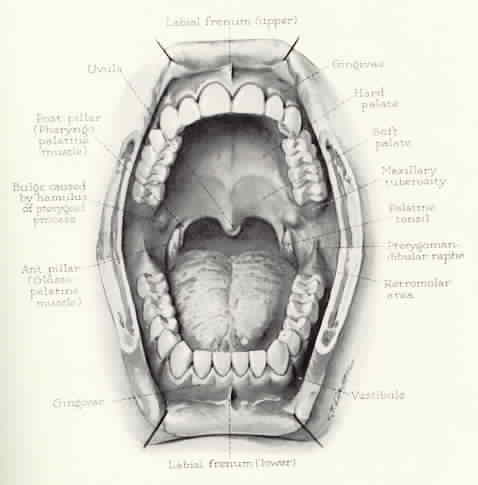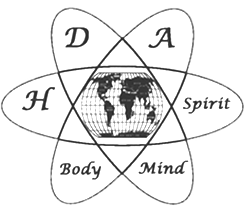
Info@CompWellness.biz
1-302-586-8665*
Email/Call for Health Answers*
Read our CompWellness Blog

System to make your face fresh, young, strong, healthy & more beautiful every day
 Info@CompWellness.biz 1-302-586-8665* Email/Call for Health Answers* Read our CompWellness Blog |
 System to make your face fresh, young, strong, healthy & more beautiful every day |


Wellness eJournal™
21st Century Wellness eLetter™ ..
Complementary Healing eGuide ™ ..
Wellness eJournal™
CompWellness Network Members List .. Resources with Links ..
Products .. CompWellness Home Page
Notices: Disclaimer, Copyright © 2000-2012, CompWellness Network, Fairfield NJ USA, Colorado Non-Profit, Trade Names, Cross-Linkages, Acknowledgments, Additional Resources and Members
Wellness eJournal Articles Listing
Wellness:
Gum Disease
– May 8, 2000
by Hali J Kaufman, DMD;
Steven J Spindler, DDS;
Monica Fisher, DDS, PhD;
Michael C Goldman, DDS;
Ray G Behm, Jr, DDS;
Holistic Dental Association

We have been told by member dentist, Robert McFerran, DDS, website Mile Hi Smiles that gum disease is a silent threat to our health - including our heart. Our Internet research clearly verified the extent of the problem and provided some solutions.
Click on the authors' article titles for more information at their websites, and click on the names to email. The text after each referenced article is from that article, unless otherwise indicated.
The Problem
From "Gum Disease Risk," by Hali J Kaufman, DMD: Did you know that 75% of all adults have gum disease? Many people have gum disease and are not even aware they have this problem. ... Gum disease is a "silent" disease - until their teeth become loose and fall out, many people do not know they have it and how seriously they do.

Do you know the signs and symptoms of gum disease?
If any of these statements are true then you may have a problem with your gums. You should visit a dentist and get an evaluation and schedule a hygiene appointment. You may need more than just a routine cleaning for your teeth to get your gums healthy again.
From "Periodontal Disease and Cardiovascular Disease," by Steven J Spindler, DDS, informs us that approximately 58 million Americans, or 1 in 5, suffer from cardiovascular disease. According to The American Heart Association, it is the leading cause of death in The United States. In light of this new information, the need to eliminate periodontal infection takes on a heightened role.
From Dr Spindler's "Contagious" article, he says that a 1997 report in the Journal of the American Dental Association states that periodontal (gum) disease may be passed from parents to children and between couples. This report agrees with other recent findings that support the association between periodontal disease and family members. Bacteria that causes periodontal disease can pass though saliva. This means that the common contact of saliva in families puts children and couples at risk for contracting the periodontal disease through the transmission of bacteria from another family member.
Based on this research, we advise that all members in a family where one member has periodontal disease, be screened by a qualified dental provider for this disease. Early detection can prevent tooth loss.
In "Thoughts to Chew On," by Monica Fisher, DDS, PhD of the American Council on Science and Health on Dr Koop's website, she points out that heart disease is the number one cause of death in the Unites States, and various studies have shown a strong link between gum disease and heart disease, even after the most common risk factors for coronary problems had been taken into account.
Though it is not yet known whether gum disease actually causes heart disease, this possibility is currently being investigated. One hypothesis is that bacteria from dental plaque (tooth debris) enter the circulation and lodge in blood vessels, where they participate in producing atherosclerotic plaque (fatty deposits).
[In addition], low birth weight is a significant cause of perinatal disease and death, and women with severe gum disease have an increased risk of bearing premature, low birth-weight infants. This is a previously-unrecognized and clinically important risk. Some researchers suggest that the inflamed gums contain chemicals that can enter the blood stream, then cross the placenta to bring about early labor.
Pneumonia is a common cause of disease and death among elderly persons, either hospitalized or in nursing homes. The elderly and medically compromised are at risk of developing pneumonia by aspirating (inhaling) bacteria from the mouth and throat. It is thought that when oral hygiene is poor, dental plaque (tooth debris) builds up, creating a dangerous source of bacteria that can be inhaled into the lungs. One hospital study actually found that using mouthwash decreased the mortality rate from post-surgical pneumonia in patients who had had open heart surgery. But further study on pneumonia is needed to support this finding.
From "Gum Disease and Heart Disease," by Michael C Goldman, DDS, he points out that medical research has been showing more and more that there are connections between infection and other serious, chronic medical conditions. Ulcers are now known to often be caused by bacterial infection. Arthritis is now being treated more as an infection, whereas just a few years ago neither stomach ulcers nor arthritis were thought of or treated as the result of infection. Many other medical conditions are now suspected of also being instigated by infection.
The mouth - teeth and gums and tonsils - has long been recognized as one of the most frequent ports of entry of infection into the body. Gum disease and root canal abscesses are significant bacterial infections that can spread by the bloodstream to remote parts of the body. This spread of infection to other parts of the body is called the focal infection theory.
Some of the research relating to heart disease indicates for those with major risk factors already present – smoking, high blood pressure, high lipids, diabetes, stress, obesity – having gum disease doubles the risk of developing heart disease.
If you have gum disease, it has been estimated that about 50% of times you brush your own teeth, you stir up the bacteria in the gums and open up bleeding spots in the gum tissue, resulting in bacteremia – bacterial infection of the bloodstream! It happens when you eat, too. The vigorous massaging of the gums by the action of the food, tongue and lips can easily stir up the already present infection!
The repeated episodes of bacteremia just from brushing - or even just from eating - cause repeated reinfection of the lining of blood vessels. The cells of the blood vessel lining react to reinfection by "puffing up" to form what has been called "foam cells." It is a structure like foam rubber, or sponge, with holes or spaces which fill up with cholesterol crystals and cellular debris.
This foam cell, with the debris embedded in it, is then surrounded by connective tissue forming the fibrous plaque with the cholesterol in it This is the cholesterol we hear so much about as clogging up the arteries [causing] hyperstension, strokes, and heart attacks.
Solutions
"The Secret to Healthy Gums," by Ray G Behm, Jr, DDS, tells us that more than 90% of all gum and tooth problems begin between the teeth. If you don't believe it, he dares you to run a piece of floss between any two molars (back teeth) and see what you pull out. Notice how it smells! Decide for yourself if you want that in your mouth!
If you have any doubts as to your condition then you should consult with a professional to help you determine the magnitude of your problem [and the proper treatment methods].
There are two methods of gum care:
Dr Behm's "secret" system was developed to enable a person to efficiently and inexpensively improve the condition of his or her own gums no matter what their condition. ... The bottom line is, as long as you are able to break up the formation of the plaque and bacteria that forms around the teeth and gums once every 24-hours, you can better control your own gum condition at home.
There are three main instruments - along with some other options if your budget allows - to be used as part of your home remedy:
Work your gums back to a healthy, pink-white color.
Exercise your gums [between the teeth] ... nutrients and blood are carried to the gums and then away from the gums creating strong circulation and therefore good, healthy, long-living tissue.
As stated above, if you have any doubts as to your condition then you should consult with a professional to help you determine the magnitude of your problem [and the proper treatment methods].
Other instruments are available, including water irrigators and vibrating tooth brushes, which can add to your gum wellness, especially in difficult cases.

For more information and a Holistic Dentist near you, see the Holistic Dental Association (HDA) website and read the "Dental Treatment Helpline." They say that in the last few years, more and more individuals are assuming greater responsibility for their own health. There is a dawning awareness that good health is more than the absence of disease. In this regard, the HDA has assumed a primary obligation to provide information and guidance to those persons seeking to participate in their own health care and to help in the continuing education of practitioners who have a desire to expand their knowledge and awareness.
Please forward this article to Friends and Associates
ONE-CLICK REGISTER for your FREE, monthly 21st Century Wellness eLetter summarizing New eJournal articles and eGuide Chapters
21st Century Wellness eLetter™ .. Complementary Healing eGuide ™ .. Wellness eJournal™
CompWellness Network Members List .. Resources with Links .. Products .. CompWellness Home Page
Notices: Disclaimer, Copyright © 2000-2012, CompWellness Network, Fairfield NJ USA, Colorado Non-Profit, Trade Names, Cross-Linkages, Acknowledgments, Additional Resources and Members
You are wise and generous to visit our Members and Sponsors <<< Click here or the following Sponsors:
Make your face fresh, young, strong, healthy & more beautiful every day ..
Denver's Bio-Cranial/Chiropractic Leader ..
Bio SuperFood Headquarters ..
Save on Amazon's New & Used Consumer Products
Visitors since 5/1/1999.
*Our 1-302-586-8665 health information service is free for the first 5 minutes, then 99 cents per minute on major credit card*
Please report all errors to the CompWellness WebMaster. Thank you.